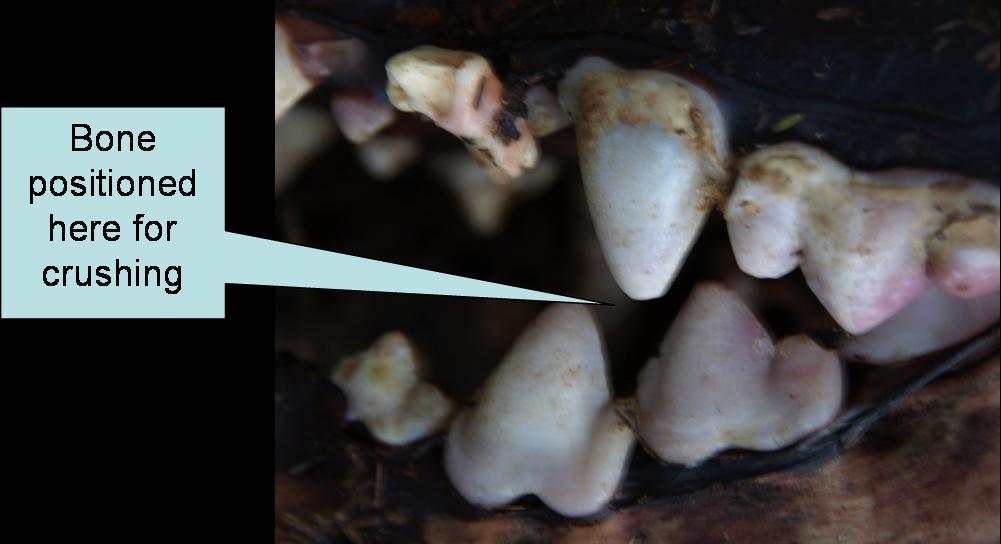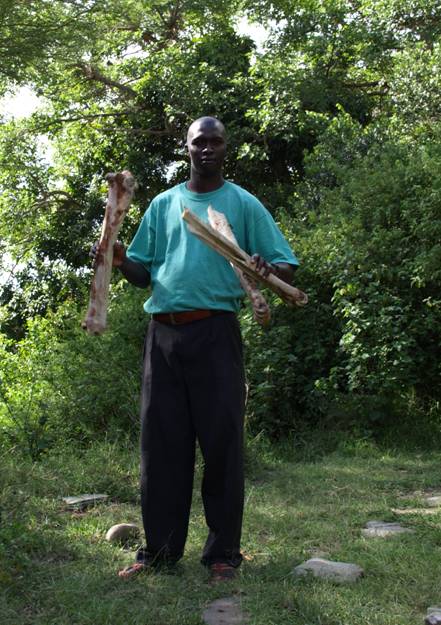|
Author: Andy Flies I mentioned last week that hyenas have a trick up their sleeve that allows them to take advantage of a food source that is inaccessible to most animals. A few people posted comments right away and hit the nail on the head. Hyenas are actually capable of breaking bones into smaller pieces and eating them. They accomplish this by gripping the bone between their teeth and the then biting down with immense amount of force. After splitting the bone into smaller fragments, they simply gulp down the chunks of bone.
The advantage of eating bones is more obvious during periods when prey animals are scarce. Being able to crack open, swallow and digest bones gives hyenas access to nutrients such as calcium and phosphorus. I would consider this similar to digging to the bottom of the pantry or freezer when I haven't been to the grocery store for a long time. I am not going to find my favorite food in either place, but I will find something to eat in one of those places. Mothers nursing cubs may eat bones to get large amounts of calcium for milk production. A couple of interesting side notes on the diet of a spotted hyena. Spotted hyenas get around 95% of their annual food intake from fresh ungulate kills. Eating bones can be an important supplement to a healthy diet, but eating fresh meat is of paramount importance. Reports exist of hyenas cracking and eating bones as large as giraffe femurs. In the photo below, James is holding three giraffe leg bones for perspective on the size of the bones. James is about five feet and nine inches tall, so that should give you some idea about the size of these bones and the strength of hyena jaws. Most hyenas favor cracking bones on either the right or left side of their mouth. Instead of being right or left-handed, they are right or left-mouthed. Many animals worldwide exhibit some form of favoritism for one side over the other. There is only one other animal to my knowledge that regularly breaks open bones to eat the marrow, and that is the Lammergeier, also know as the bearded vulture. This vulture picks up bones in its mouth and flies into the sky. They then release the bones and drop them on rocks with the hope of breaking open the bone. It may take several tries before the bone actually breaks open, if it does at all. Much less efficient than the hyena method of using their massive jaw muscles to break open the bones.
1 Comment
Dee
4/11/2022 05:25:27 pm
What PSI does a hyena's jaw hold?
Reply
Your comment will be posted after it is approved.
Leave a Reply. |
About
Notes From Kenya is a blog run by the students in the Holekamp Lab at Michigan State University, College of Natural Science, East Lansing, Michigan, U.S.A. Archives
July 2020
Categories |


 RSS Feed
RSS Feed